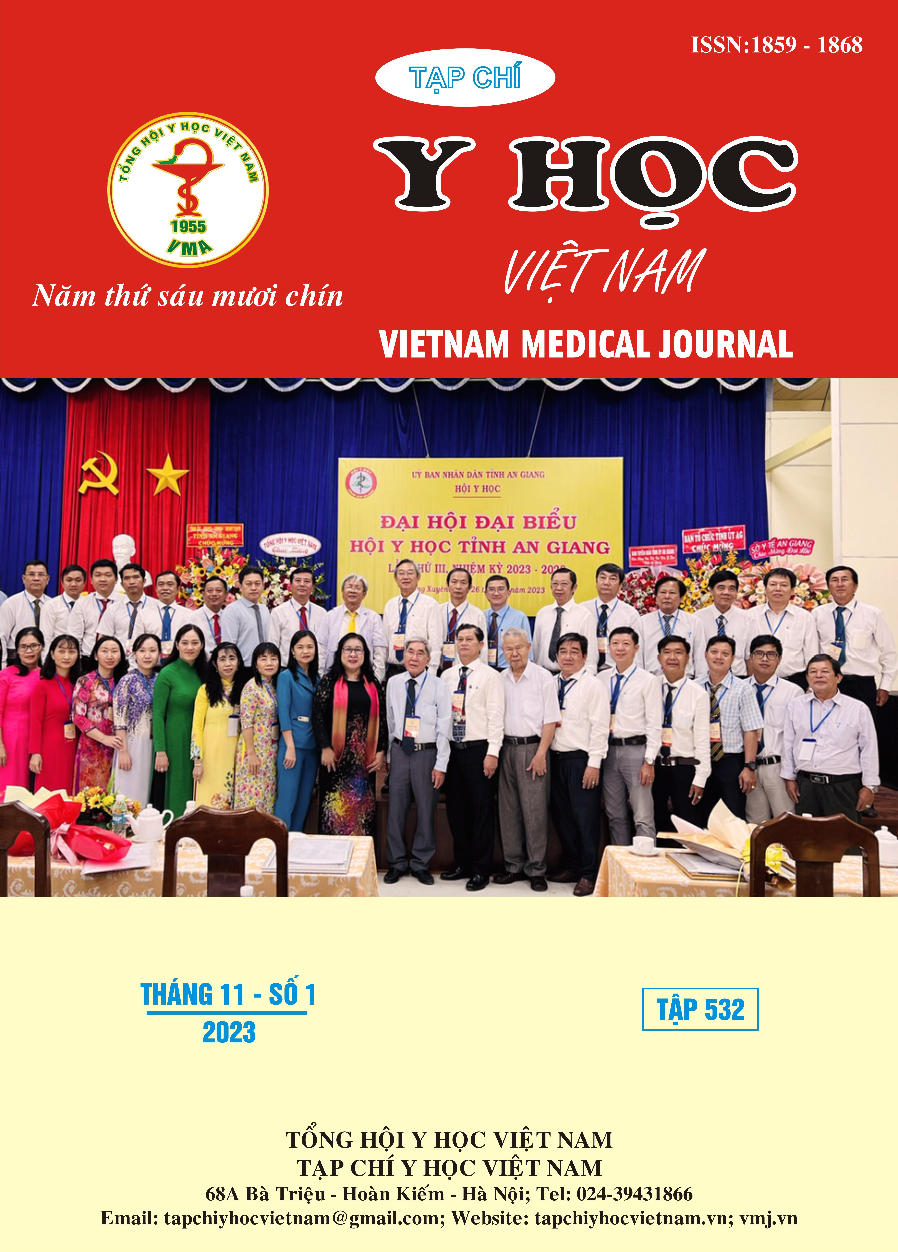BURN SHOCK OF CHILDREN’S HOSPITAL 1
Main Article Content
Abstract
Objectives: Describe the characteristics of burn shock in children at Children's Hospital 1. Materials and methods: 383 burned children were treated at the Burns-Plastic Surgery Department of Children's Hospital 1 from February 1, 2021 to August 15, 2022. Research method is descriptive prospective, longitudinal follow-up. Results: During the study period from February 1, 2021 to August 15, 2022, there were 383 admissions to Children's Hospital 1 with a complication rate of 2,8% burn shock. Among pediatric patients with complications of burn shock, deep burns of II-III accounted for 81,1%. In pediatric patients with complications of burn shock, the rate of burn area > 40% TBSA was 42,8%; burn area within 30% TBSA ≤ burn area < 40% TBSA is 50%; burn area within 20% TBSA ≤ burn area < 30% TBSA is 11,8% and burn area < 10% TBSA is 0,3%. Complications of burn shock increase as the burn area increases (OR = 1,12; KTC 95% = 1,07-1,17) and the depth of the burn increases (OR = 2,23; KTC 95% = 1,37-3,64). Within 48 hours after burn, the highest Hct is 57%, the lowest blood albumin is 1 g/dL, 57,1% blood albumin decreases with burn area ≥ 40% TBSA. There is a very close negative linear correlation between burn area and blood albumin (R = -0,72, p = 0,003) with the linear regression equation of blood albumin = -0,029 x TBSA + 3,416. Conclusions: Burn shock is a potentially fatal complication. Burn shock increases as the burn area increases and the burn depth increases. There is a very close negative linear correlation between burn area and blood albumin.
Article Details
Keywords
burned children, burn shock in children
References
2. Jiang S, Ma N, Li H, Zhang X. Effects of thermal properties and geometrical dimensions on skin burn injuries. Burns. 2002;28(8):pp. 713-717.
3. Herndon DN. Epidemiological, Demographic and Outcome Characteristics of Burns. Total burn care. Elsevier Health Sciences; 2018:pp. 35-50. vol. 3.
4. Fang H, Xu L, Zhu FZsszzZsz. Advances in the research of persistent inflammation-immunosuppression-catabolism syndrome in severe burn. Chinese journal of burns. 2019; 35(7):pp. 548-551.
5. Lê Thế Trung. Đại cương bỏng. Bỏng những kiến thức chuyên ngành. Nhà xuất bản Y học; 2003:tr. 17-72. vol. 1.


